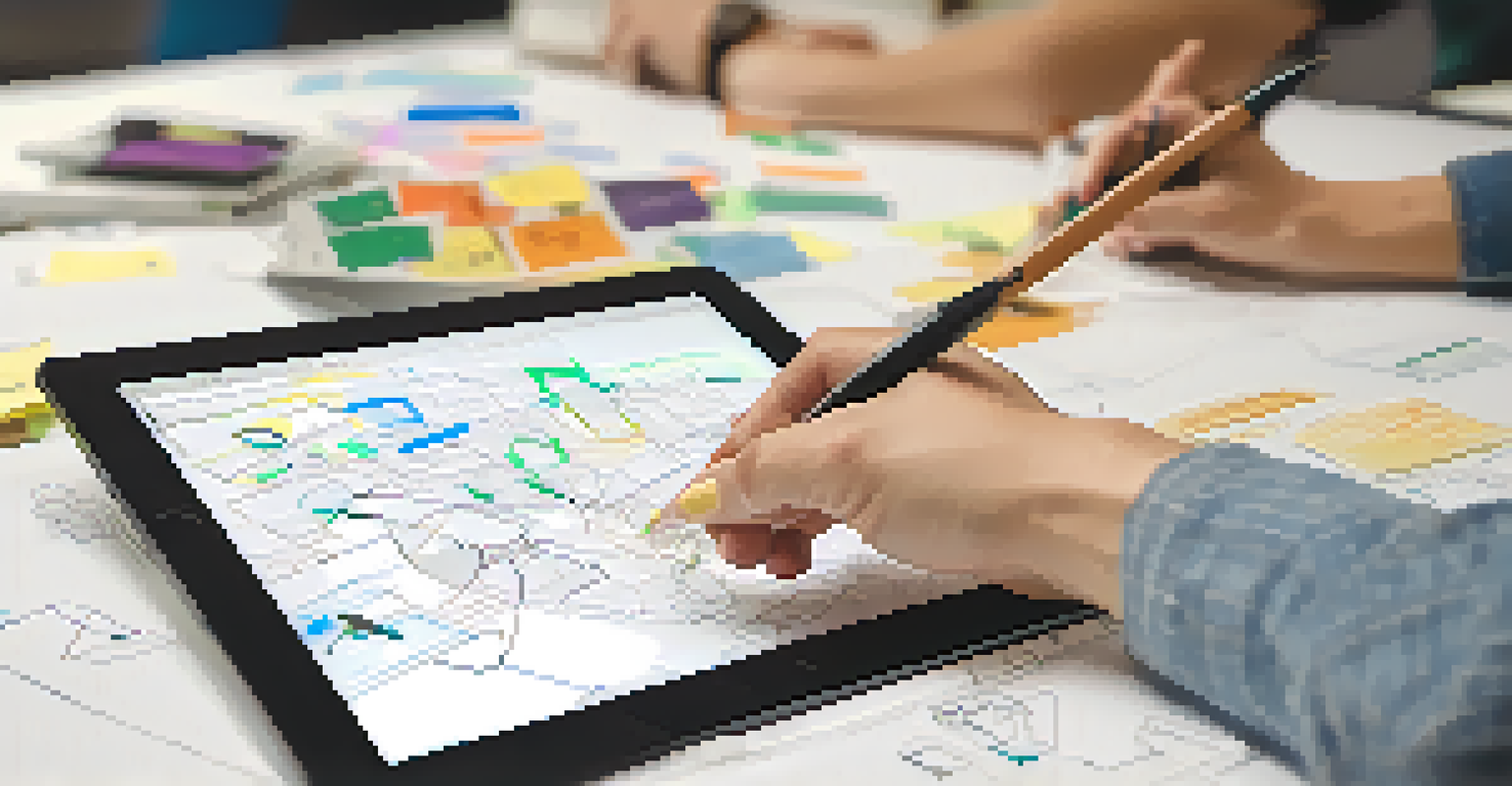The Significance of Prototyping in the Innovation Development Process

Understanding Prototyping: A Key Innovation Tool
Prototyping is essentially creating a preliminary model of a product or service. It allows innovators to visualize and test ideas before full-scale production. By engaging in this iterative process, teams can refine their concepts based on real feedback.
Prototyping is the first step in turning ideas into reality.
Imagine building a model of a house before constructing the actual structure. This approach helps identify design issues early, saving time and resources. Similarly, in the innovation development process, prototypes enable teams to explore their ideas tangibly.
Ultimately, prototyping is about reducing uncertainty. It transforms abstract concepts into concrete forms, making it easier for stakeholders to understand and evaluate the potential of a new innovation.
Types of Prototypes: Finding the Right Fit
There are various types of prototypes, each serving different purposes. For instance, low-fidelity prototypes, like sketches and paper models, are great for brainstorming and early-stage testing. High-fidelity prototypes, on the other hand, closely resemble the final product and are useful for gathering detailed user feedback.

Think of prototyping like trying on clothes. A simple sketch may give you a sense of style, while a fitting room experience shows how the garment fits. Both approaches yield valuable insights but cater to different stages of decision-making.
Prototyping Reduces Development Costs
Investing in prototyping helps identify flaws early, which can save both time and money in the development process.
Choosing the appropriate prototype type depends on your goals and the stage of development. By aligning your prototyping strategy with your objectives, you can ensure a smoother innovation journey.
The Role of User Feedback in Prototyping
User feedback is a vital component of successful prototyping. By involving potential users early in the process, innovators can gather insights that shape the product's development. This feedback loop helps identify issues and areas for improvement before launching the final version.
The best way to predict the future is to invent it.
Consider a chef creating a new dish. Tasting sessions with diners provide crucial feedback on flavor and presentation, allowing the chef to refine the recipe. Similarly, user feedback guides innovators in making adjustments that align with market needs.
Ultimately, incorporating user feedback not only enhances the product but also fosters a sense of ownership among users. When people feel their opinions matter, they are more likely to support the final product.
Cost-Effectiveness of Prototyping in Development
Investing in prototyping can significantly reduce overall development costs. By identifying flaws and design issues early on, teams can avoid costly changes later in the process. This proactive approach saves both time and money, making it a smart investment for any innovation project.
Think of prototyping like preventive maintenance for a vehicle. Addressing small issues before they escalate can save you from a major repair bill down the line. Similarly, catching problems early in the innovation process allows for more efficient resource allocation.
User Feedback Enhances Innovation
Involving potential users early in prototyping allows innovators to gather valuable insights that refine the final product.
In the end, the cost-effectiveness of prototyping lies in its ability to streamline development. By investing in this phase, businesses can enhance their return on investment and increase the likelihood of successful product launches.
Enhancing Collaboration Through Prototyping
Prototyping fosters collaboration among team members, stakeholders, and users. It creates a tangible point of reference that everyone can discuss, making communication clearer and more effective. This shared understanding is crucial for aligning visions and expectations.
Imagine a team working on a new app. Using a prototype, they can gather input from designers, developers, and potential users all at once. This collaborative approach helps identify issues and spark creative solutions that might not emerge in isolation.
In essence, prototyping acts as a bridge between diverse perspectives. By facilitating collaboration, it helps teams leverage their collective expertise, ultimately leading to a more refined and innovative final product.
Iterative Development: Learning from Prototyping
One of the most significant benefits of prototyping is its support for iterative development. This method encourages continuous improvement through cycles of testing, feedback, and refinement. Innovators can learn from each iteration, gradually honing their ideas into viable products.
Think of the iterative process like sculpting a statue. Each chisel stroke reveals new details and nuances, guiding the artist toward the final masterpiece. In the same vein, prototyping allows innovators to peel back layers and uncover the true potential of their ideas.
Prototyping Shortens Time to Market
By streamlining development and facilitating early testing, prototyping accelerates the process of bringing products to market.
By embracing an iterative mindset, teams can adapt to changing circumstances and user needs. This flexibility not only enhances innovation but also increases the chances of achieving product-market fit.
Prototyping's Role in Reducing Time to Market
Prototyping can significantly shorten the time it takes to bring a product to market. By streamlining the development process and facilitating early user testing, teams can quickly identify what works and what doesn't. This speed is crucial in today's fast-paced business environment.
Consider the analogy of a race car driver fine-tuning their vehicle. Through constant testing and adjustments, they can optimize performance and cross the finish line faster. Similarly, prototyping accelerates the innovation process by allowing teams to iterate swiftly.

Ultimately, reducing time to market not only gives companies a competitive edge but also allows them to respond more effectively to customer demands. Prototyping is a powerful tool for staying ahead in a crowded marketplace.
Conclusion: Embracing Prototyping for Successful Innovation
In conclusion, prototyping plays a pivotal role in the innovation development process. From fostering collaboration and gathering user feedback to streamlining costs and reducing time to market, its benefits are manifold. Embracing this practice can lead to more successful and user-centered products.
As the landscape of innovation continues to evolve, staying adaptable and responsive is key. Prototyping equips teams with the tools they need to navigate challenges and seize opportunities. It transforms ideas into reality, paving the way for impactful solutions.
By integrating prototyping into your innovation strategy, you not only enhance development outcomes but also create a culture of continuous improvement and creativity. It’s time to harness the power of prototyping for your next big idea!